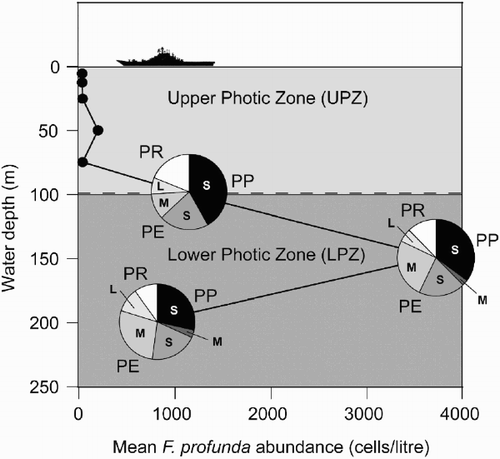Figures & data
Figs 1–4. SEMs showing coccosphere and coccolith morphology of Florisphaera profunda var. profunda (1, 2) and Florisphaera profunda var. elongata (3, 4). . Complete coccosphere of F. profunda var. profunda viewed from antapical pole, composed of small, simple, straight-sided small coccoliths. . Partially incomplete coccosphere viewed from antapical pole, composed of unusual, short-fat coccoliths with distal spine. . Complete coccosphere of F. profunda var. elongata viewed from side with coccosphere terminology used in this study, composed of elongate coccoliths with anterior peak. . Close-up of F. profunda var. elongata coccoliths with coccolith terminology used in this study. Scale bars represent 5 μm (–) and 2.5 μm ().
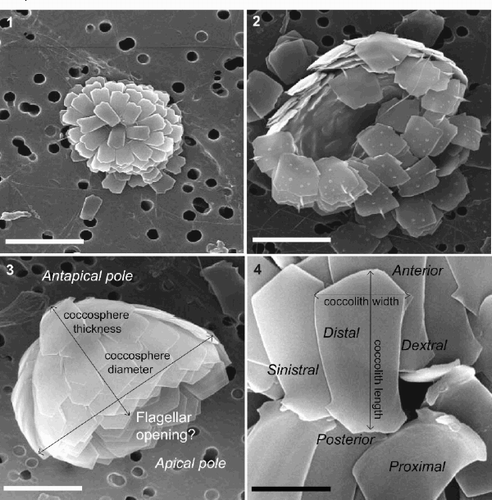
Figs 5–8. SEMs showing morphology of Florisphaera profunda var. rhinocera var. nov. . Complete coccosphere viewed from antapical pole, composed of straight-sided, rhombic coccoliths with prominent anterior spine (Holotype). . Partially flattened coccosphere viewed from antapical pole, composed of curved coccoliths with indistinct anterior spine. . Flattened coccosphere viewed from the side, composed of curved, sail-shaped coccoliths with small anterior and dextral spines. . Collapsed coccosphere viewed from side, composed of straight-sided to slightly curved coccoliths with prominent anterior spine. Scale bars represent 5 μm.
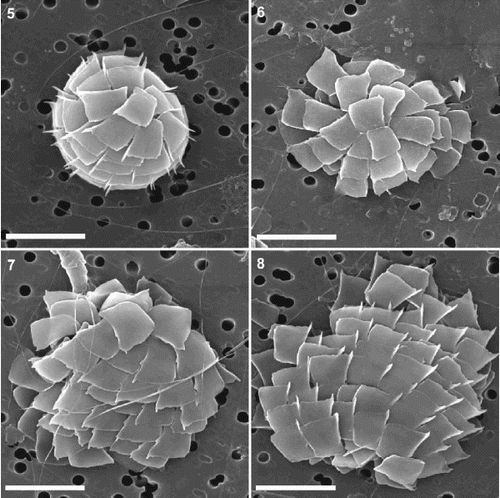
Fig. 9. Coccosphere and coccolith size of F. profunda from HOT, BATS and EBC plankton samples. Coccosphere diameter and mean coccolith length of all complete, undeformed cells upon which at least three coccoliths could be measured. The individual distributions of the three varieties of F. profunda are shown: PP – F. profunda var. profunda, PE – F. profunda var. elongata, PR – F. profunda var. rhinocera. Coccosphere diameter and mean coccolith length is correlated with a coefficient (r) of 0.46.
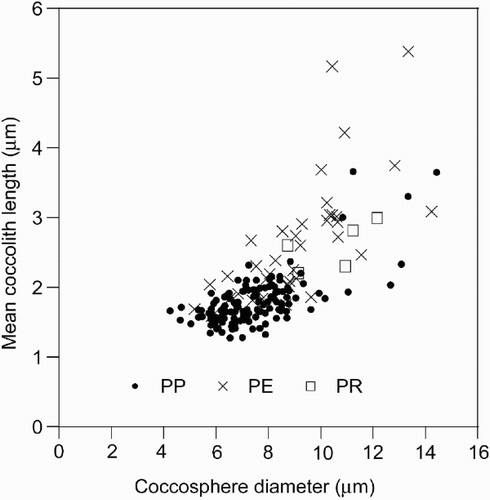
Fig. 10. Graphs showing mean coccolith size distribution and morphotypes of F. profunda from HOT, BATS and EBC plankton samples. A–C. Mean coccolith length and width of all complete, deformed or collapsed specimens upon which three or more coccoliths could be measured is plotted as a scatter alongside the smoothed frequency distribution of mean coccolith length, calculated using a bin of 0.2 μm. Mean coccolith length and width is correlated with a coefficient (r) of: (A) – 0.84, (B) – 0.93 and (C) – 0.59. In F. profunda var. profunda and F. profunda var. elongata several modes or size morphotypes are visible. These are labelled S, M, L and XL, and their possible subdivision is indicated by dashed lines on the distribution of mean coccolith length. D–F. Mean coccolith size distribution and morphotypes of F. profunda in a single plankton sample from October 1995 at 150 m depth at HOT (sample H67–150m). Morphotypes F. profunda var. profunda S and M and F. profunda var. elongata S, M and L are visible in this sample. No coccospheres of F. profunda var. elongata XL were found, however, isolated coccoliths corresponding in size to this morphotype were encountered.
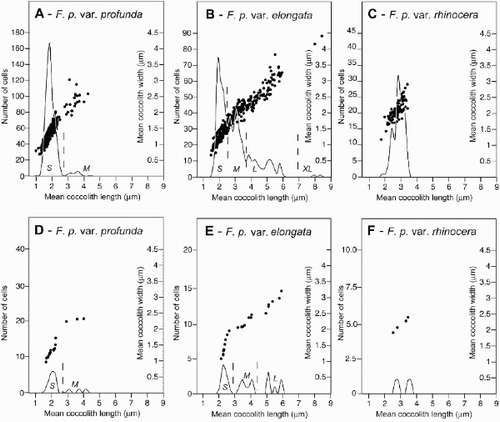
Figs 11–16. SEM images of F. profunda cells corresponding to the size morphotypes identified in this study. F. profunda var. profunda small (), medium (), F. profunda var. elongata small (), medium (), large () and extra large (). Scale bars represent 5 μm.
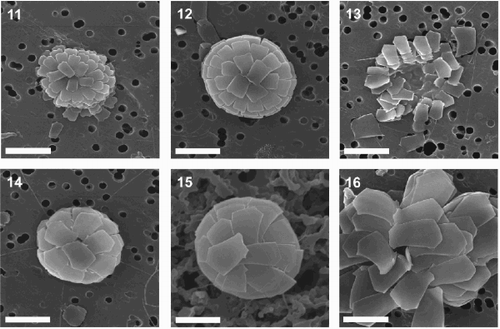
Fig. 17. Graphs showing Florisphaera profunda cell density at the HOT time series station. A Total F. profunda cell density at the depth of maximum abundance during 1994–1995. B–D. Cell density of the three varieties and six size morphotypes at the depth of maximum total F. profunda abundance: F. profunda var. profunda (B), F. profunda var. elongata (C) and F. profunda var. rhinocera (D). Total F. profunda abundance data from Cortés et al. (Citation2001).
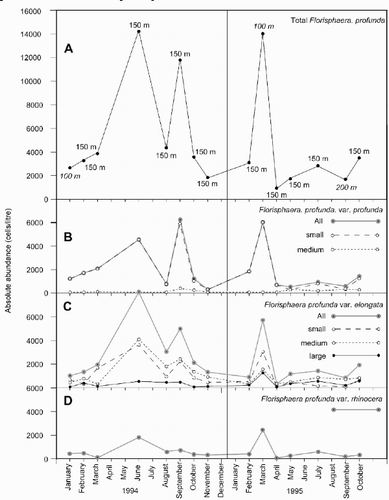
Fig. 18. Diagram showing Florisphaera profunda cell density at different depths in the photic zone during 1994–1995. Mean total F. profunda cell density for 1994–1995 is shown by black line, with the relative abundance of each of the three varieties of F. profunda and their size-morphotypes at 100, 150 and 200 m in the LPZ indicated. PP – F. profunda var. profunda, PE – F. profunda var. elongata , PR – F. profunda var. rhinocera. Total F. profunda abundance data from Cortés et al. (Citation2001).
